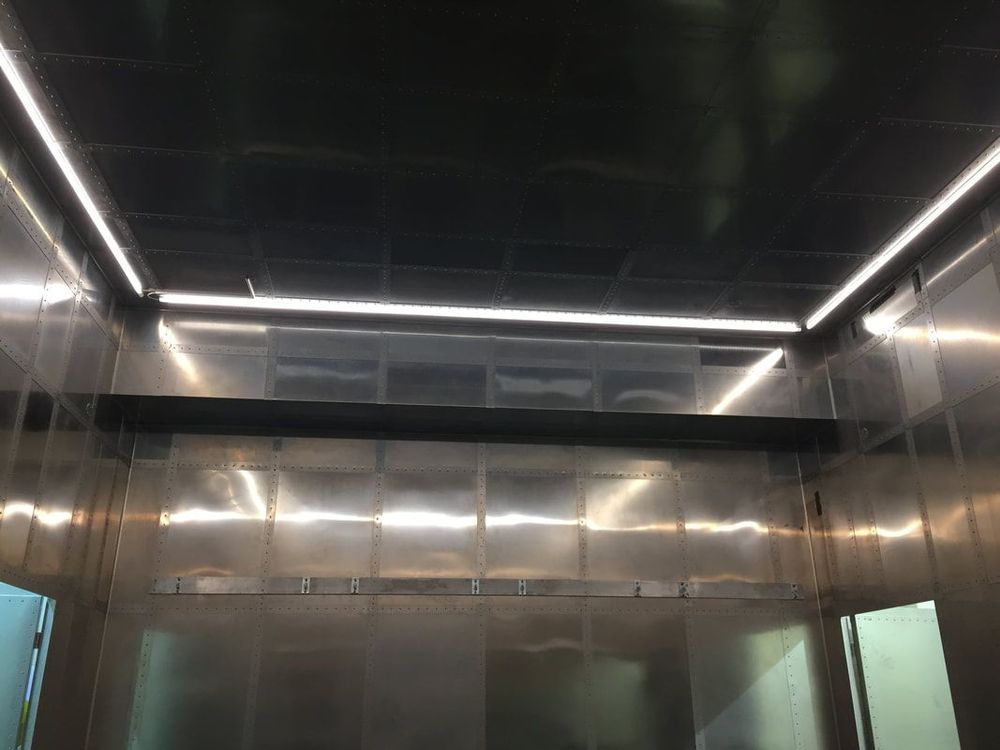
MAGNETIC FIELD SHIELDINGS
Room and large shieldingsLarge volume magnetic shieldings, rooms
Various pioneering experiments can be affected by magnetic fields and may require shieldings against electromagnetic fields with a magnetically shielded room, MSR - Magnetically shielded room. Tiny magnetic pulses from the active nerves of the human body can be the focus of a biological experiment. These pulses can be detected, but their signals can be superimposed by background fields.
Electron microscopes can also suffer from external magnetic fields. Just as optical microscopes use photon wavelengths to illuminate a sample of interest, electron microscopes use the shorter wavelength of electrons in an electron beam to provide higher resolution of the sample. These highly sensitive imaging devices benefit from magnetic shieldings.
Shieldings of high-resolution electron microscopes
Shieldings of high-resolution electron microscopes. An electron moving in a magnetic field experiences a force that tends to change its direction of motion unless that motion is parallel to the field. An electron beam can be focused with electromagnetic lenses. Optical lenses diffract photons traveling through them and converge the outgoing beam. The principle of an electromagnetic lens is similar; the electron beam can be focused by changing the path of the incident electrons.
The basic design of an electromagnetic lens consists of a magnet through which the beam can pass on its way to the sample. Applying a current to the magnet induces a magnetic field according to Ampere's law, which, since electrons are extremely sensitive to magnetic fields, deflects the electrons to a focused point. Both scanning electron microscopes (SEM) and transmission electron microscopes (TEM) rely on this process.
The resolving power of a microscope is inherently dependent on the wavelength of electromagnetic radiation used to produce the image. When the wavelength of the radiation is decreased, the resolving power is increased. Because electron wavelengths are approximately 100,000 times shorter than photon wavelengths, electron microscopes offer superior resolving power to optical microscopes.
While the precision of electron microscopes is a great advantage, there are disadvantages of electron microscopy that must be addressed. External magnetic fields interfere with the electron beam and reduce the overall resolving power of the microscope. Placing the microscope in a magnetically shielded room ensures that the microscope can reach its upper resolution limit.

Medical imaging equipment shielding
Magnetoencephalography (MEG) uses extremely sensitive magnetometers such as SQUIDs (superconducting quantum interference devices) or OPMs (optically pumped magnetometers) to record very small magnetic fields induced by synchronized ionic nerve currents in the brain.
MEG records data instantaneously so that a wide range of neurological brain processes can be effectively observed and studied in real time. from mapping brain responses to stimuli to studying structural abnormalities in the brain.
While MEG is valuable for a wide range of noninvasive neurological research, it is also widely used in conjunction with other forms of imaging such as positron emission tomography (PET) and electroencephalography (EEG).
The ambient geomagnetic field is approximately 50 μT; the field generated by the brain is on the order of 10 to 9 μT (or 1 fT).The need to shield oneself from the much larger ambient field is clearly evident in order to obtain useful measurement results of these small fields.Field signals of no interest must be removed, which can be done with an appropriately designed magnetic shield. There are usually numerous applications for small shields, based on the principle that a highly permeable material redirects the field around the volume of interest, making that volume virtually field-free.
If we were to simply scale a small shield to the dimensions of a room with large flat surfaces, we would see a significant decrease in the efficiency of the shield. The increasing demand for large, magnetically shielded volumes with high field attenuation, has led us to develop optimally shielded rooms, consisting of several MUMETAL® layers as well as copper or aluminum layers, for shielding RF fields, which achieve remarkable shielding factors.
MUMETAL® is a registered trademark of Carpenter Technology (UK) Limited